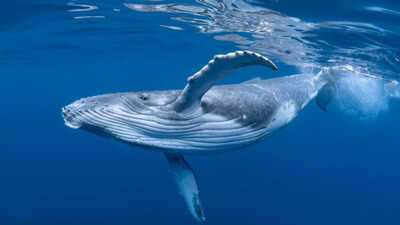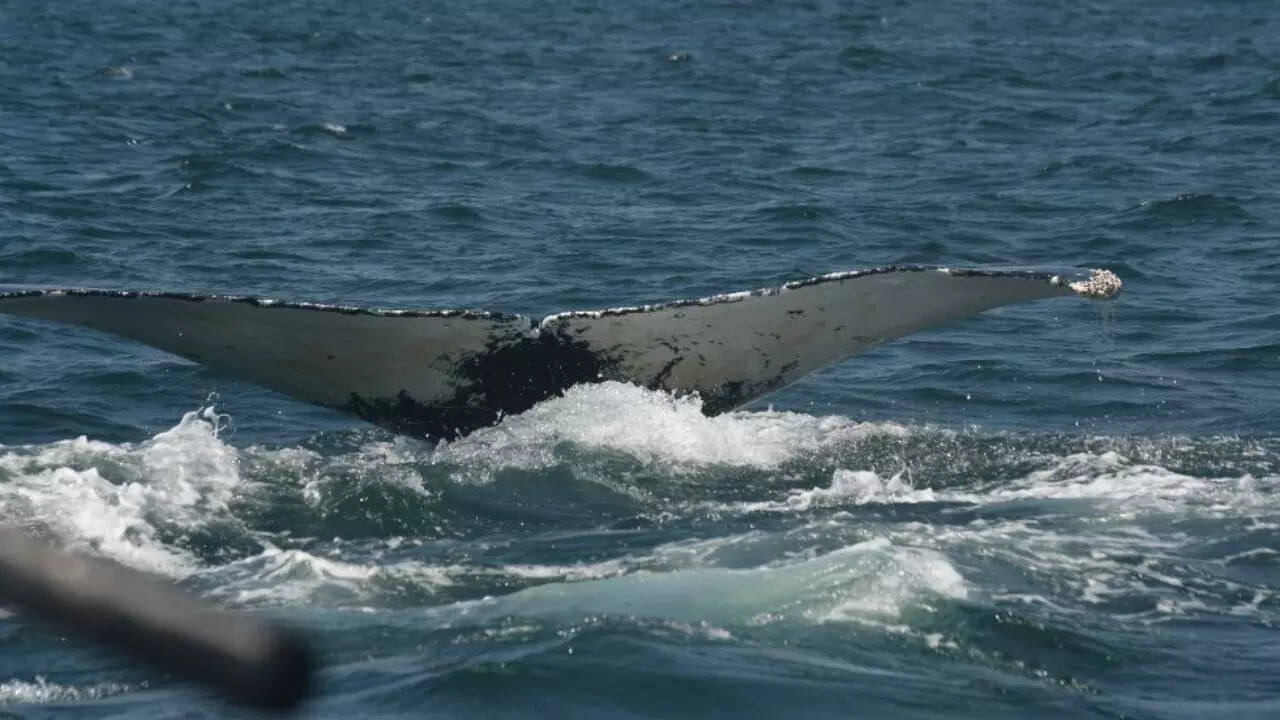 When researchers fixed a camera tag onto a humpback whale, they anticipated collecting data on movement and behaviour. What they witnessed instead was far more remarkable: the whale’s own perspective of a powerful breach, captured in stunning detail. For the very first time, the world saw what it looked like as this giant surged from the depths, twisting gracefully, and burst into the air before crashing back into the sea with tremendous force. The footage offered not just scientific value but also an awe-inspiring window into the life of one of the ocean’s most magnificent creatures, highlighting the mystery, intelligence, social complexity, and unmatched majesty of whale behaviour in the wild, deep blue.This extraordinary recording provided researchers and the public with an entirely new way to connect with marine life, blending science and wonder. It deepened appreciation for whale conservation, ocean ecosystems, and the urgent need for protection.
When researchers fixed a camera tag onto a humpback whale, they anticipated collecting data on movement and behaviour. What they witnessed instead was far more remarkable: the whale’s own perspective of a powerful breach, captured in stunning detail. For the very first time, the world saw what it looked like as this giant surged from the depths, twisting gracefully, and burst into the air before crashing back into the sea with tremendous force. The footage offered not just scientific value but also an awe-inspiring window into the life of one of the ocean’s most magnificent creatures, highlighting the mystery, intelligence, social complexity, and unmatched majesty of whale behaviour in the wild, deep blue.This extraordinary recording provided researchers and the public with an entirely new way to connect with marine life, blending science and wonder. It deepened appreciation for whale conservation, ocean ecosystems, and the urgent need for protection.
According to NOAA: What humpback whale breaches reveal about the giants of the sea

Source: Stellwagen Bank National Marine Sanctuary
According to research and observations shared by NOAA Stellwagen Bank National Marine Sanctuary (SBNMS), humpback whales often launch themselves out of the water in dramatic breaches, creating immense splashes that leave spectators in awe. Scientists study these leaps to better understand whale behaviour, energy use, and social interactions, while photographers and whale-watchers capture their majesty. Breaching serves several purposes, including communication, play, and parasite removal. Through tagging and ongoing observation, researchers are uncovering more about the complex ways these ocean giants interact with their environment.
Inside the breach: Whale-mounted cameras reveal nature’s most dramatic leap
A humpback whale breach is one of the most breathtaking spectacles in the natural world. These immense ocean giants launch themselves skyward with astonishing force, their massive tails powerfully driving them high above the surface before they come crashing back into the sea with thunderous impact. Scientists suggest that breaching may serve multiple purposes, ranging from communication and social bonding to play, parasite removal, or sheer impressive displays of strength and vitality. Whatever the motivation, the sight leaves onlookers deeply awestruck. And now, with the help of innovative whale-mounted cameras, we can witness this dramatic event from an entirely new and intimate perspective.
How the clever suction-cup camera technology helped scientists study whales safely
The technology behind this breakthrough is simple yet clever and highly effective. Researchers use non-invasive suction-cup tags, sometimes fitted with small cameras, that temporarily cling to the whale’s sensitive skin. These lightweight, waterproof devices record detailed data on movement, sound, behaviour, and underwater video before naturally detaching and floating safely back to the ocean surface. Often, dramatic actions such as a powerful breach or tail slap shake them loose. This innovative, minimally invasive approach makes it possible to study whales closely without harming, stressing, or significantly disturbing them in their natural environment.This method not only provides scientists with unprecedented insights into whale behaviour and communication but also helps inform conservation efforts. By understanding how whales interact with their environment, researchers can develop strategies to protect critical habitats and mitigate human impacts like shipping, fishing, and noise pollution.
Hidden details of a whale breach revealed in groundbreaking footage
The footage stunned experts not only because of its beauty but because of its perspective. Watching a breach unfold through the whale’s eyes offers new insight into how these giants coordinate their movements, conserve energy, and interact with their environment. Subtle details of motion, posture, and timing, impossible to detect from boats or drones, become clear when recorded directly from the whale’s own body and natural rhythm. This extraordinary vantage point revolutionises marine research, enabling scientists to better understand whale cognition, social behaviours, hydrodynamics, and evolutionary adaptations while also deepening global public appreciation for ocean conservation and ecological interdependence.Beyond scientific insights, this perspective also transforms how we connect with whales on an emotional level. Seeing the world through their eyes fosters empathy, wonder, and respect, while highlighting the complexity of their social structures and relationships. It reminds us of the urgent importance of protecting these majestic creatures and their delicate ocean habitats for future generations, inspiring stronger conservation efforts, awareness, and meaningful action worldwide.
Whale cameras around the world: Unlocking hidden lives
This isn’t an isolated achievement. Camera tags are revolutionising whale research globally:Feeding strategies: Devices reveal how whales engulf massive volumes of prey such as krill or fish, showing the mechanics of their expanding throats. These insights help scientists understand energy efficiency, feeding adaptations, ecological impacts, and how climate change could influence prey availability and whale survival strategies globally.Resting behaviour: Footage has captured whales pausing mid-dive, suggesting more complex resting patterns than previously thought. This evidence provides clues about energy conservation, deep-sea navigation, brain activity during rest, predator avoidance, and overall survival strategies essential for long-distance migration.Social interactions: Whale-mounted cameras have recorded moments of play, tail-slapping, and cooperative hunting, behaviours rarely visible from the surface. These recordings reveal communication cues, social bonding, group coordination, teaching behaviours, and how cultural knowledge among whales influences survival, reproduction, and species resilience across generations.These insights are giving scientists an unprecedented, whale’s-eye view of life beneath the waves, helping to answer long-standing questions about their survival strategies, communication, and role in maintaining the balance of marine ecosystems.
From spectacle to science: Why this matters
Beyond the thrill of watching, these insights have real-world value:1. Understanding behaviour: Detailed video helps decode the mysteries of feeding, resting, and social interactions. By capturing rarely seen moments, researchers can analyse patterns in movement, communication, and social hierarchies, providing valuable insights into whale ecology.2. Conservation benefits: Knowledge of key feeding grounds and migration routes informs protection efforts. This information allows policymakers to establish marine protected areas, regulate shipping lanes, and reduce human-wildlife conflicts, directly supporting species survival.3. Raising awareness: Dramatic visuals from a whale ’s-eye view inspire global fascination and empathy, fuelling conservation campaigns. Such immersive storytelling encourages the public to engage with conservation initiatives, support research funding, and adopt sustainable ocean practices.As technology advances, whale-mounted devices are becoming smaller, smarter, and less intrusive. Future tags may combine cameras with sensors that detect heart rate, temperature, or even stress levels. Meanwhile, alternative methods such as ship-based thermal imaging systems are being developed to reduce whale–vessel collisions, adding to the conservation toolkit.Also read | The oldest known ‘black hole’ identified by the James Webb Space Telescope: A glimpse into the early universe

